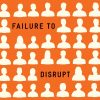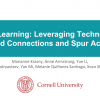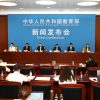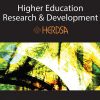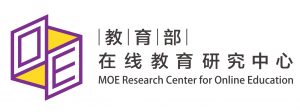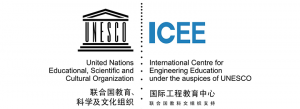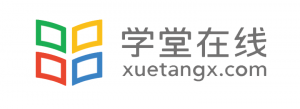This post is also available in: 简体中文
Abstract:
The novel coronavirus (COVID-19) pandemic has triggered a worldwide upsurge in online education exploration. China was the first country to practice nationwide and systematic online teaching, and has effectively guaranteed a high level of online teaching quality nationwide. Successfully transforming “forced innovation” into “anti-epidemic dividend” requires the education authorities and colleges to take a long-term perspective and actively explore in eight aspects. Through institutionalized, standardized, and normalized measures, the efforts and innovations of teachers and learners across the country can be consolidated into a series of new models for education and teaching. Thus, China’s basic education and higher education can embody the transformation and advancement of education approaches by embracing the new technology revolution. First mover advantage and lead the global education reform.
Keywords:
anti-epidemic dividend, online education, institutionalization, normalization, educational reform
Author:
Bin Yang, Vice President and Provost of Tsinghua University; Professor at School of Economics and Management, Tsinghua University.
Online teaching has long been in existence before, but this time was different. Schools and universities used to have an option whether to teach online or not, but it was not an option during COVID-19 due to the closure of campuses. Additionally, this “forced innovation” has enabled much learning-by-doing: for faculty, it was like a comprehensive (re-)training for (online) teaching; and for students, they became the veritable first generation of online learners — “Online Learners 1.0”. All these have also made us rethought and redefined many elements in higher education. For example, the student registration process, who qualify as enrolled students or full-time students, auditing classes, counting attendance and grading participation, speaking up during classes, and paying attention during classes.
On the other side, universities also realized there were widely-recognized benefits of moving online too. Graduate admission tests and thesis defenses are two great examples. Not only the advanced technology of graduate admission tests can effectively and securely validate applicants’ identity, part-time degree applicants were also allowed to choose test timeslot that accommodates their job schedule. Additionally, convenience derived from the online interview format provided interviewers more flexibility to ask more profound questions. Online thesis defenses are no longer about having graduating students’ research contributions recognized by a small number of experts on a panel, but the research process and findings can now be openly reviewed and examined by more peers in the broader scholarly community, potentially encouraging more and better research partnerships.
In this paper, “anti-epidemic dividends” are referred to the normalization of contingency and innovative measures from remote education as institutionalized improvements, thus turning temporary crisis responses into long-term beneficial reform opportunities. Hence, although the speedy effort of moving classes online and productive engagement between students and faculty is highly commended and praised, this does not necessarily qualify as “anti-epidemic dividends.” The following are some selected objectives to consider as we aim to turn these “extraordinary times into ordinary practices.”
- When we can institutionalize and normalize these progress and achievements from today’s epidemic situation
- When we regularize and formalize the efforts of teachers and students and the discretionary policies of the education authorities
- When we transform and integrate valuable materials created from the teaching process into MOOCs and future courses
- When we permanently raise the teaching faculty required digital and pedagogical proficiency to the level of the epidemic period
- Lastly, when we further blend the concept of online and offline teaching such that we can no longer distinguish the two.
So going forward, what exactly shall administrators encourage and do?
1. Actively explore the "new normal" of university teaching in the "post-epidemic" era
When reviewing the past semester, it is essential to recognize innovative teaching designs used for individual learning and group learning, as well as newly found needs for teaching and learning (which are entirely reasonable and should not be ignored). For example, some students feel the ability to playback and fast-forward recorded lectures provided more control in their learning progress. No matter what the factors are, we need to carefully consider and pay great attention to the driving force of the initial top-down and subsequent bottom-up changes. Administrators should encourage and support teachers and students to actively conceive, explore, and co-create the future of higher education together.
This kind of exploration will likely lead to an improved version of “student-centered learning” and ultimately providing new meanings to higher education, university campuses, classrooms, and classes. Here are the characteristics of the “new normal”:
- It can satisfy the desire of in-person exchanges and communication, as well as “soul-to-soul” teacher-student interactions
- It can meet the needs of teachers and students who prefer or have to have more flexibility in the “where” and “when” of learning
- It can provide almost the same quality and equitable standard of learning environment for students who study at different times and locations
2. Continue to accelerate the expansion of "asynchronous" online teaching resources using MOOC
With the recent surge in popularity of video conferencing applications (such as ZOOM) during the pandemic, it is not difficult to imagine that synchronous learning was the default option and focus for many teaching faculty at universities. One of the reasons may be the realization that there are significant shortages of asynchronous online teaching resources, like MOOCs, in both breadth (across different disciplines) and depth (different difficulties within the same discipline).
There are three key advantages of using “asynchronous” resources, such as MOOCs or pre-recorded teaching materials:
- First of all, they create more convenience for students who cannot follow the teacher in real-time interactive learning for various reasons;
- Secondly, “asynchronous” resources create more conditions and opportunities for students to carry out subsequent higher-level learning, online or offline;
- Thirdly, the “asynchronous” and “synchronous” design of different learning contents requires each teacher to be proactive and plan ahead of time. Different, or even the same, teachers of the same course will have different ways to organize each class, which will eventually present many inspirations for teaching innovations.
Due to the emergency form of remote learning in the last semester, many teaching faculty, though reluctantly, have forgone the movie-like production standard and news-anchor-like vocal delivery. With decreased pressure of “cost,” “format,” and “production,” many more teachers were able to rethink what makes a great MOOC and embrace the “internet mindset” by creating MOOCs.
3. Focus on building a system to develop teachers' pedagogical digital competence
Although some teaching faculty have learned to use a series of specialized software, such as video conferencing systems and smart classroom teaching tools, many are still scratching the surface. For example, online teaching is still mostly a simple copy of in-person teaching to online platforms and yet has taken full advantage of online technology to neutralize the weakness of in-person teaching. In other words, pedagogical competence and digital competence are still being seen as separate layers by many.
University teaching will likely take a blended form under the “new normal,” which will require every teacher to take “required courses” on developing their pedagogical digital competence. Additionally, lifelong learning and continuing professional development for teaching faculty is a necessity for all rather than a luxury for a few. Thus, creating the optimal policy environment to drive education reform.
4. Online education accelerates the realization of a "global classroom, campus, and university"
Online education reduces cost and distance, as well as lowers the barrier for international collaborations. Therefore, to maximize its benefits, administrators should actively encourage innovations such as a “global classroom” between two or more universities, from different countries, asynchronously or synchronously; or a “global campus” that extends from sharing lectures and courses to student co-development initiatives.
XuetangX, one of the world’s largest MOOC platform founded by Tsinghua University, launched its international version on April 20, 2020. The platform has witnessed benefits not only to students from outside Chinese universities, but also international students studying at Chinese universities. Additionally, the platform aims to breakdown barriers of language and geography by strengthening its training for teaching assistants, while developing courses that play to the strength of the Chinese education system, particularly in STEM (science, technology, engineering, and mathematics). This way, it may become possible to realize the idea of a “global university.”
5. Support and highly value online education research based on big data of learning behaviors
The epidemic makes us realize that the data generated by online teaching can play an important role in accurately assessing the teaching outcome, and evaluating the teaching design, improving learning by providing targeted assistance to students.
Research teams are discovering rare learning data. Researchers will soon uncover more critical learning patterns and learner behaviors that were unknown before or ignored by educators. Undoubtedly, in policy-making, faculty should be fully encouraged to use information technology to collect data, analyze data, and guide practice with data, in order to improve teaching efficiency and outcome. In the long run, learning data can also evolve into career development data and human resources data, which can also be used more effectively.
6. Solving future inequalities by bridging the digital divide and enhancing network infrastructure today
During the system-wide online education experience, it became clear that traditional classrooms and university campuses are no longer the only formal learning venue. Due to the outbreak, online learning suddenly changed from “good-to-have” to “must-have” and abruptly became the formal way to learn and study.
Throughout the breakout, it was apparent that the degree of digital divide varies greatly among different countries, reflecting the economic and social inequality that impact access to ICT (information and communication technology). In the cases where online education is not an option, the digital divide and related infrastructure greatly affected education equality. Thus adequate infrastructure no longer only concerns higher education institutions, but should also be infrastructure should be the priority of a country.
Although China’s network infrastructure seems to be more advanced than many countries, other challenges also surfaced. For example, we saw that laboratory courses requiring learners’ hands-on experiments have significantly been affected; and how universities can carry out online examinations fairly for all students. At the beginning of 2020, there were no good quality and scalable solutions to these problems globally. However, by the end of the Spring semester, the epidemic acted as a catalyst and has accelerated the continuous exploration and deepening of technologies such as virtual laboratory, virtual reality, augmented reality, artificial intelligence, online assessment.
As the stringent social distancing policies have been relaxed, remote learning technology saw a temporary drop in demand, reducing the impetus for further technological development. However, experts argue that this is the exact time that requires more intentional top-level design, long-term planning, and preparation. Moreover, this is the perfect time to encourage teachers to open up their thinking, innovate teaching designs, try various tools, and experiment on the “new infrastructure” for blended learning using “rich technology” (high content and high degree integration of science and technology).
7. Achieving education equity through online education
One of the core missions of online education is to improve education equality, which was well demonstrated during the outbreak. Tsinghua University made over 300 MOOCs available online for free to the public. Additionally, through the Rain Classroom platform, Tsinghua has initiated and successfully implemented 36 “clone classes” with its six sister universities reaching 3,380 faculty and students (Wuhan University, Huazhong University of science and technology, Huazhong Agricultural University, Xinjiang University, Taiyuan University of technology, Qinghai University), and of those, three were located in the initial epicenter of the outbreak. Moreover, Tsinghua University invited 452 faculty members from Xinjiang University to participate in 115 “clone classes” from Tsinghua, representing unique learning opportunities. There are often visiting scholars and exchange programs between universities internationally, but lacks the same within the same country. Capitalizing on the power of online education and without compromising enrolled students’ experience, these initiatives demonstrate the beauty of inclusiveness in higher education. Therefore, in terms of university policy formulation and design, every university’s unshirkable duty is to make use of “asynchronous” teaching resources and “synchronous” online classrooms to form and promote inter-university teaching cooperation and fulfill the social responsibility of colleges and universities.
Both sharing resources and building better infrastructure (as mentioned previously) create an “equal playground” for all students, thus, advancing the progress towards education equality. However, universities should also consider achieving equity in education on top as well; in other words, how can universities provide tools and opportunities for enabling students to thrive and become better learners?
8. Institutional reform to strengthen the robustness of degree and graduate education to meet the challenges ahead
Due to social distancing policies, many Chinese universities have turned to online for their graduate admission assessments, for the first time. For example, Tsinghua University hosted 230 graduate admission tests remotely for over 2,800 applicants. Moreover, while assuring the seriousness, legitimacy, and effectiveness, many universities have also switched to online thesis and dissertation defenses for the first time. For example, Tsinghua University conducted over 4,000 online defenses for graduating students during March and May. Since many faculty and applicants provided such positive comments for their experiences and that this feedbacks are still fresh in their minds, policymakers must act now to swiftly institutionalize changes and standardize processes for opening up talent selection and thesis defense in the future. Additionally, such policies may create more favorable conditions for the international development of higher education, including joint training and joint degrees for students?
Conclusion
The above eight recommendations are drawn from successful teaching and learning practices in Chinese colleges and universities during the anti-epidemic period. They reflected the innovative spirits and great efforts of teachers and students, which are highly commended recognized. Therefore, if administrators focus on the long-term work on institutionalization and normalization of changes made, going beyond merely ensuring efficiency and stability of education management, there represents an excellent opportunity to transform the “anti-epidemic dividend” into a more competitive and innovative higher education system for China.
In particular, as higher education institutions, we must have the capability to learn from our past and experiences from around the world. At Tsinghua, we found positive results from:
- working together with unified leadership at the university and national level;
- avoiding hasty decision-making by planning and thinking long-term (for example, using online platforms that can collect helpful learners behavior data);
- consolidating resources for a small number of mature online platforms instead of many decentralized inefficient and ineffective efforts to reinvent the wheel
- considering the financial sustainability of research funding and academic recruitment market
In sum, the global community of higher education must acknowledge that there will be a “new normal” in the “post-epidemic” era; thus, it is unlikely that we will return to the old. By embracing the new technological revolution and the transformation of education methods resulting from the “anti-epidemic dividend,” we can all take advantage of being a first-mover and leader in global education reforms.
This post is also available in: 简体中文

